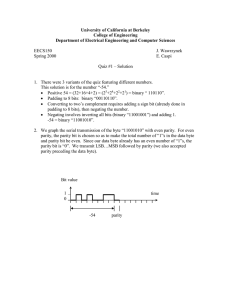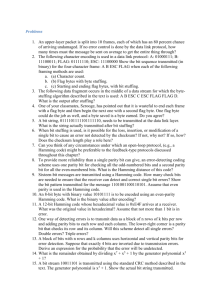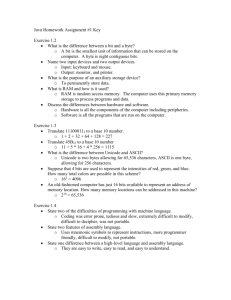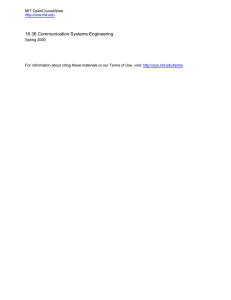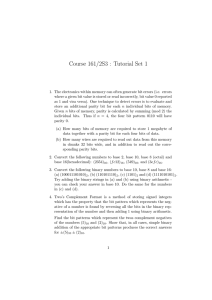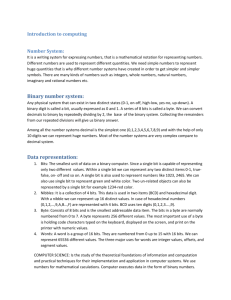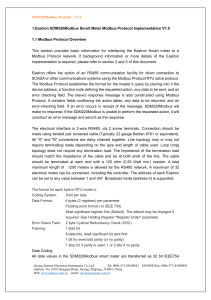University of California at Berkeley College of Engineering
advertisement
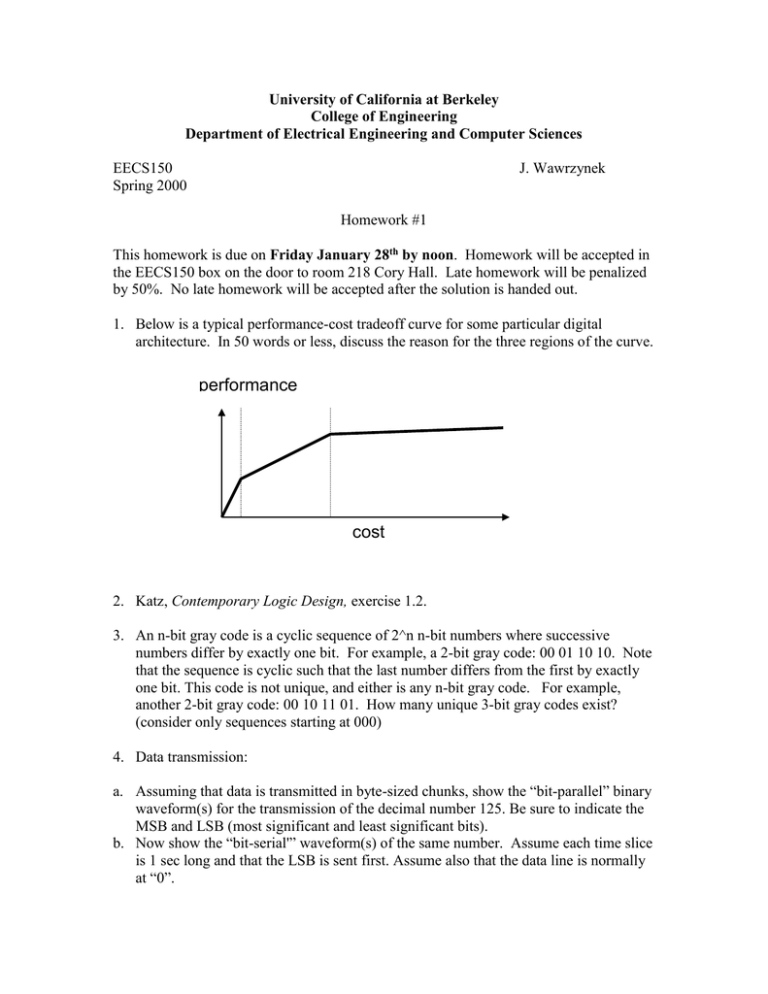
University of California at Berkeley College of Engineering Department of Electrical Engineering and Computer Sciences EECS150 Spring 2000 J. Wawrzynek Homework #1 This homework is due on Friday January 28th by noon. Homework will be accepted in the EECS150 box on the door to room 218 Cory Hall. Late homework will be penalized by 50%. No late homework will be accepted after the solution is handed out. 1. Below is a typical performance-cost tradeoff curve for some particular digital architecture. In 50 words or less, discuss the reason for the three regions of the curve. performance cost 2. Katz, Contemporary Logic Design, exercise 1.2. 3. An n-bit gray code is a cyclic sequence of 2^n n-bit numbers where successive numbers differ by exactly one bit. For example, a 2-bit gray code: 00 01 10 10. Note that the sequence is cyclic such that the last number differs from the first by exactly one bit. This code is not unique, and either is any n-bit gray code. For example, another 2-bit gray code: 00 10 11 01. How many unique 3-bit gray codes exist? (consider only sequences starting at 000) 4. Data transmission: a. Assuming that data is transmitted in byte-sized chunks, show the “bit-parallel” binary waveform(s) for the transmission of the decimal number 125. Be sure to indicate the MSB and LSB (most significant and least significant bits). b. Now show the “bit-serial'” waveform(s) of the same number. Assume each time slice is 1 sec long and that the LSB is sent first. Assume also that the data line is normally at “0”. c. In many cases a “bit-serial” signal is transmitted over long distances. To provide a degree of error control a parity bit is appended to the end of the transmitted byte. This bit is chosen so as to make the sum of the transmitted data bits (data byte + parity) to be an even number. In order to be able to transmit a series of bytes over a single wire it is also necessary to prepend a “start” bit and append a “stop” bit to each byte. Using the same assumptions as above, show what the transmission of the byte '125' immediately followed by '25' looks like with parity, start and stop bits. (Hint: The order is start, byte, parity, stop, start, byte, parity, stop). 5. Convert the following numbers from base ten to two’s complement, one’s complement and sign magnitude (use 16 bits for each number). -1011, -32752, 1500
